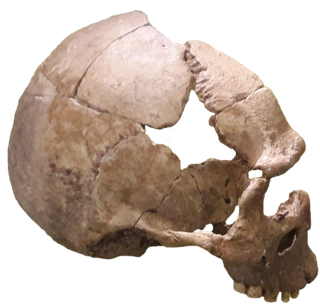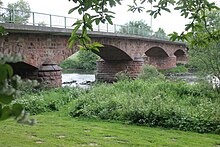Schwalm-Eder-Kreis is a Kreis (district) in the north of Hesse, Germany. Neighbouring districts are Kassel, Werra-Meißner, Hersfeld-Rotenburg, Vogelsberg, Marburg-Biedenkopf, and Waldeck-Frankenberg.

The Eder[ˈeːdɐ] is a 177-kilometre (110 mi)-long major river in Germany that begins in eastern North Rhine-Westphalia and passes in to Hesse, where it empties into the River Fulda.

Felsberg is a town in the Schwalm-Eder district about 25 kilometres south of Kassel.

Bundesautobahn 49 is a federal motorway running through north Hesse. It connects Kassel with the Schwalm-Eder-Kreis, where it ends in Neuental. The motorway is planned to be extended to Gemünden (Felda) with a connection to A 5.

Gudensberg is a small town in northern Hesse, Germany. Since the municipal reform in 1974, the nearby villages of Deute, Dissen, Dorla, Gleichen, Maden and Obervorschütz have become parts of the municipality.

Guxhagen is a community in Schwalm-Eder district in northern Hesse, Germany.

Jesberg is a community in the Schwalm-Eder district in Hesse, Germany.

Malsfeld is a community in the Schwalm-Eder district in Hesse, Germany, on the river Fulda.

Melsungen is a small climatic spa town in the Schwalm-Eder district in northern Hesse, Germany. In 1987, the town hosted the 27th Hessentag state festival.

Wabern is a community in the Schwalm-Eder district in northern Hesse, Germany. It lies on the Main-Weser Railway between Kassel and Frankfurt. From Wabern, the Edersee Railway runs to Bad Wildungen.

Söhrewald is a municipality in the district of Kassel, in Hesse, Germany. It is located 13 kilometers southeast of Kassel. The municipality was formed by the former independent municipalities Eiterhagen, Wattenbach and Wellerode in 1970.

Wolfershausen is one of the sixteen constituent communities that form the town of Felsberg in Schwalm-Eder-Kreis, North Hesse, Germany.

The West Hesse Depression is part of the West Hesse Highlands and Lowlands region in the north of the German state of Hesse. Like the East Hesse Depression, it is a series of separate depressions that form a natural corridor and have been an important historical trade route.

Lotterberg is a 305 m (1,001 ft) (NHN) high hill between the villages of Wolfershausen and Deute in Schwalm-Eder-Kreis, Hesse, Germany.

The Rhünda, also called the Rhündabach, is a 12.9 kilometres (8.0 mi) long, eastern tributary of the River Schwalm in the Schwalm-Eder-Kreis, North Hesse, Germany.

The Riesenstein is a megalith or menhir, which is situated close to the village of Wolfershausen. It is the largest megalith in the district of Schwalm-Eder-Kreis, Hesse, Germany.

The Rhünda Skull is a fossil human skull that was found just outside the village of Rhünda in North Hesse, Germany. It is dated to the Magdalenian, about 12,000 years old.
Brunslar was a short-lived municipality in North Hessen, in the now-extinct district of Melsungen, Germany. It was created during the changing of district boundaries on 1 February 1971, when the independent communities of Altenbrunslar and Neuenbrunslar fused. On the 31. December 1971 the community of Wolfershausen joined the Brunslar municipality.
Brechelsdorf was a village that was abandoned around the 14th to 15th century AD. There are no visible remains today. It was situated within the perimeter of the village of Altenbrunslar, which part of the town of Felsberg, in the district of Schwalm-Eder-Kreis in North Hesse, Germany.
The Söhre is a forested hill range of the German Central Uplands and a subordinate natural region of the Fulda-Werra Uplands in North Hesse, Germany.























